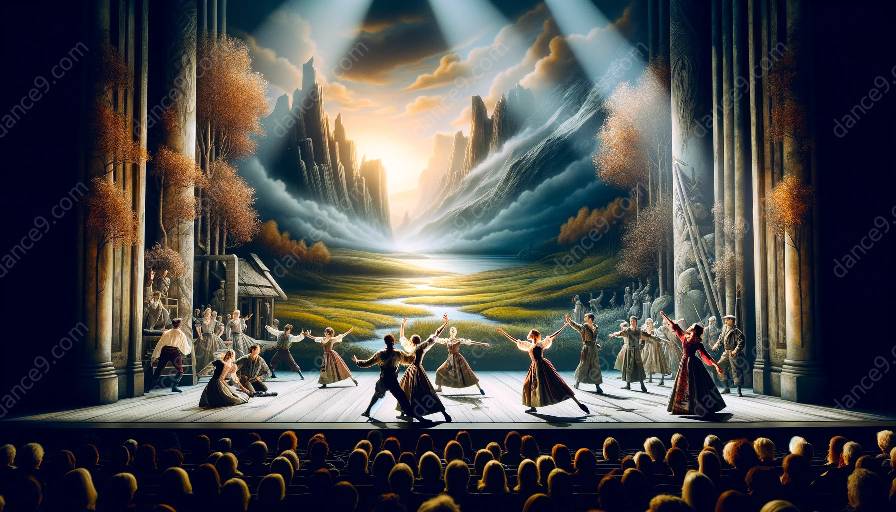Choreography is the art of creating and arranging movements into a coordinated sequence. It is a highly creative and expressive form of art that requires skill, precision, and a deep understanding of movement and space. Narrative choreography takes this art to the next level by weaving a story or theme through the movements, creating a compelling and immersive experience for the audience. Within this realm, the integration of improvisation adds a dynamic and spontaneous element, enhancing the storytelling and emotional impact of the performance.
The Essence of Narrative Choreography
Narrative choreography goes beyond mere movement and aesthetics. It delves into the heart of storytelling, using dance as a means of communication. Choreographers in this style strive to convey a narrative, evoke emotions, and engage the audience on a profound level. The use of themes, characters, and plot development through movement and expression is at the core of this approach, making it a powerful vehicle for artistic expression.
Integrating Improvisation
Improvisation in dance is the spontaneous creation of movements in response to music or other stimuli. When integrated into narrative choreography, improvisation breathes life into the storytelling process. It allows dancers to react in the moment, infusing authenticity and raw emotion into their performances. Moreover, improvisation opens doors for unforeseen interactions, creating a sense of unpredictability and uniqueness in each rendition of the choreography. This dynamic element can enchant and surprise both dancers and audiences alike, bringing an added layer of excitement to the performance.
Techniques and Concepts
The integration of improvisation in narrative choreography requires specific techniques and concepts to ensure a cohesive and impactful performance. Choreographers often employ structured improvisation, where dancers explore movement within predefined guidelines, allowing for spontaneity while maintaining the overall narrative arc. Additionally, the use of improvisation prompts or cues can guide dancers to embody certain emotions or qualities in response to the narrative, enhancing the storytelling aspect of the choreography.
Impact on Dance Performance
When executed skillfully, the integration of improvisation in narrative choreography can deeply resonate with the audience, immersing them in the emotional journey presented on stage. The combination of a compelling narrative with spontaneous moments of expression creates a multidimensional experience that transcends mere movement. It fosters a sense of connection and empathy, as the authenticity of improvised movements can evoke genuine reactions and emotions from both dancers and spectators.
Embracing Dynamic Creativity
By integrating improvisation in narrative choreography, dancers and choreographers embrace dynamic creativity, breaking the confines of preconceived movements and allowing for organic expression. This approach encourages dancers to connect with their instincts and emotions, fostering a deeper connection to the art form. It also challenges traditional notions of choreography, prompting a shift towards a more fluid and adaptive approach, where each performance becomes a unique and unrepeated experience.
Conclusion
Integration of improvisation in narrative choreography enriches the storytelling aspect of dance, elevating it to a realm of authenticity, spontaneity, and emotional depth. By intertwining structured narratives with moments of improvisational freedom, choreographers construct compelling performances that engage the audience on a visceral level. This approach breathes life into the dance, fostering a sense of connection and shared experience between performers and spectators.






































